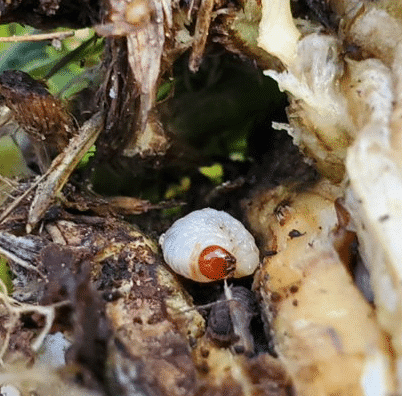By Lara Phillips| May 2, 2023
Join us every week during Invasive Species Action Month as we look at wins in the world of invasive species.
If you’ve spent any time in BC’s southern interior, you’ve undoubtedly come across invasive knapweeds. Diffuse and spotted knapweed are strong invaders of dry valleys and plateaus, rangelands, roadsides and other disturbed areas. Capable of causing significant ecological and economic damage, both species are listed on the province’s noxious weed list. In 2009 it was estimated that, due to knapweed, BC suffered a cumulative loss of 20 million dollars. This figure was based on lost forage production, soil erosion, and recreational values.
With limited success of traditional invasive plant control methods, the provincial government initiated a long-term biological control effort to suppress knapweed. Ten different species of seed and root feeding insects – including flies, moths, and beetles – were released from 1970 to 1987.
Fast forward several decades and you may wonder, have knapweed populations declined in BC? If so, do we have biocontrol insects to thank?

Evaluation of the biocontrol program was achieved by analyzing historical vegetation data from 1983–2008 at 19 sites that contained knapweed, assessing it alongside new surveys conducted at the same sites in 2010. Of those sites, 15 contained diffuse knapweed, while the other four contained spotted knapweed. Results showed considerable declines of both species. The most significant declines were with diffuse knapweed. 11 out of 15 sites contained no plants where they were previously found.
While many alternative explanations were considered, including weather patterns and competitive native plant communities, the evidence strongly pointed to biocontrol insects as the primary cause of knapweed decline. Several comparable studies, including one conducted by Newman et al. (2011) in Kamloops, produced similar results.
So, what did that mean for BC’s wallet? The return on biocontrol investment for diffuse knapweed was estimated in 2009 at $17 for each dollar spent! That’s a fair chunk of change, especially when combined with the ecological value of protecting the southern interior’s incredibly biodiverse ecosystems. Hats off to you, biocontrol bugs!
- Gayton, D., & V. Miller. (2012). Impact of biological control on two knapweed species in British Columbia. Journal of Ecosystems and Management, 13(3), 1-14. Published by FORREX Forum for Research and Extension in Natural Resources. http://jem.forrex.org/index.php/jem/article/viewFile/136/472
- Newman, R.F., S. Turner, B.M. Wallace, & S. Ceselli. 2011. The decline of diffuse knapweed in British Columbia. B.C. Ministry of Forests and Range, Forest Science Program, Victoria, B.C. Technical Report No. 065. http://www.for.gov.bc.ca/hfd/pubs/Docs/Tr/Tr065.pdf
Lara Phillips is a Special Projects Lead at ISCBC. An avid trail runner and backcountry enthusiast, she feels most at home amongst nature and cares deeply about protecting BC’s diverse ecosystems. You can reach Lara at lphillips@bcinvasives.ca
Share





